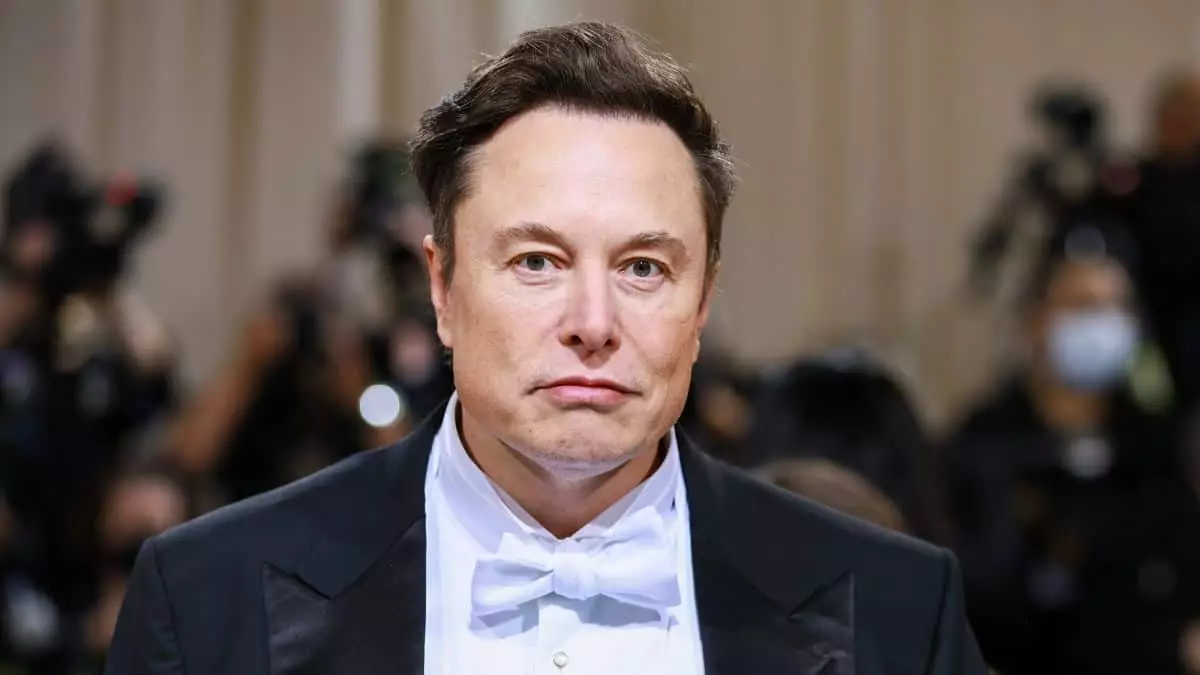In a bold move that has stirred much debate across various platforms, Elon Musk has intensified scrutiny on the U.S. Treasury’s operational integrity. Serving as the head of the Department of Government Efficiency (D.O.G.E), Musk’s statements reveal deep-seated concerns regarding the management of taxpayer funds. On February 2, he took to social media to voice his outrage, asserting that officials within the U.S. Treasury were supposedly “breaking the law every hour of the day” through the approval of unauthorized payments. His accusations did not just stop at intentions—they raised alarms about systemic inefficiencies that could involve connections to fraudulent organizations. Such dramatic assertions naturally attracted considerable attention, yielding both skepticism and support from various sectors, particularly within the cryptocurrency community.
The crux of Musk’s argument is not merely a condemnation of current practices; it also points towards a potential solution—blockchain technology. After a crypto commentator, Mario Nawfal, raised the provocative question of whether the Treasury should adopt blockchain systems to prevent fraudulent transactions, Musk’s enthusiastic endorsement (“Yes!”) propelled discussions into the limelight. Proponents of distributed ledger technology (DLT) argue that it could offer not only transparency but also a seismic shift in how financial transactions are monitored and processed at a federal level.
The idea of moving Treasury transactions to a blockchain network introduces an immutable record of every dollar spent, which could significantly mitigate the risks associated with corruption and inefficiencies. By having a transparent, real-time tracking system, advocates believe the U.S. government could effectively prevent “backroom deals” and misappropriated funds. Such changes could revolutionize how federal expenditures are managed, tapping into the unprecedented accountability blockchain can provide.
While the conversation surrounding blockchain’s integration into government systems continues to gain momentum, real-world examples have already demonstrated its effectiveness. Lindsay Poss, a podcast host, highlighted Ukraine’s Transparent Network as a shining case study. The system is dedicated to tracking reconstruction funds, combating the pervasive issue of corruption that has historically plagued aid efforts, and showcasing the potential for increased accountability through blockchain technology.
Nevertheless, caution remains necessary, as some voices in the community urge careful consideration before plunging into such a monumental transition. Crypto trader and analytics developer Aquino warned of the hurdles linked to implementing cutting-edge technology within existing governmental frameworks. Political resistance and the challenging task of redefining legacy infrastructures are obstacles that must be addressed before any concrete steps can be taken. These considerations may serve as a sobering reminder that while technology can facilitate significant improvements, its deployment requires meticulous planning and execution.
Musk’s Broader Implications and Ongoing Controversy
In the backdrop of Musk’s comments lies a fraught narrative involving D.O.G.E.’s alleged access to sensitive taxpayer data. Reports have surfaced about potential attempts to withhold payments unlawfully to certain government programs. All of this unfolds amid Musk’s ongoing legal battles with the U.S. Securities and Exchange Commission (SEC), which indicted him for not disclosing his holdings inside the X platform in a timely manner. The swirling controversies surrounding Musk’s ventures coalesce to paint a picture of just how fragile the relationship between technology and governance can be.
Furthermore, his role as the sole head of D.O.G.E. after the resignation of Vivek Ramaswamy has platforms buzzing with speculation about the implications his leadership will have on cryptocurrency markets like Bitcoin. His warnings about enforcing measures that could potentially curtail Bitcoin’s growth echo the complexities entangled in the relationship between technology, regulatory frameworks, and financial markets. Each element suggests that while technological innovation could drive efficiencies, its interplay with governance and policy requires acute awareness and responsibility.
Elon Musk’s advocacy for blockchain technology as a panacea for government inefficiencies presents an intriguing model for potential reform. By pointing out existing inadequacies within the U.S. Treasury, Musk not only ignites discourse around financial accountability but also paves the way for innovative solutions that may redefine governance. However, the path forward must be navigated carefully, considering political, infrastructural, and legal challenges. As the technology of tomorrow beckons, it is clear that adaptation must align with both vision and pragmatism to create a truly effective and transparent financial future for the government.

